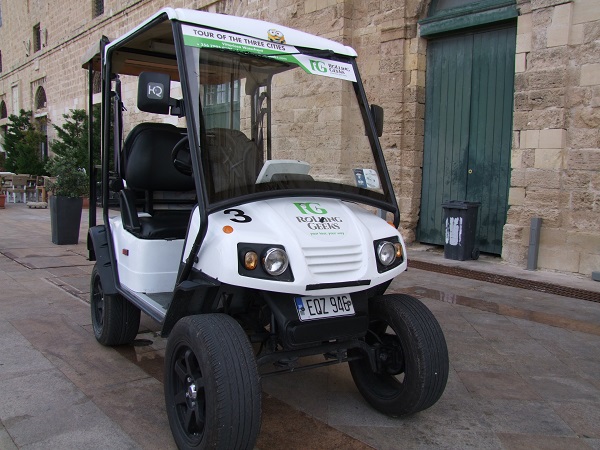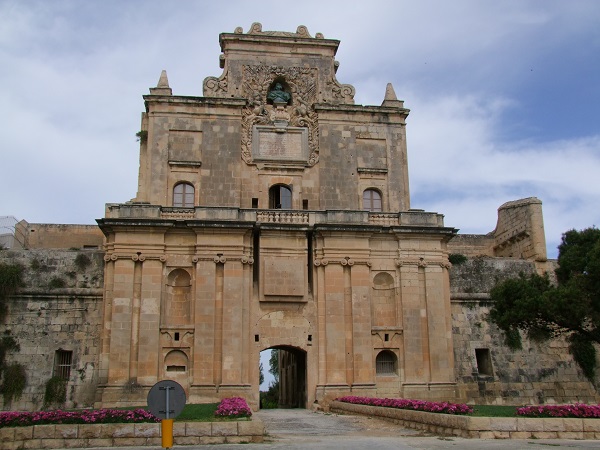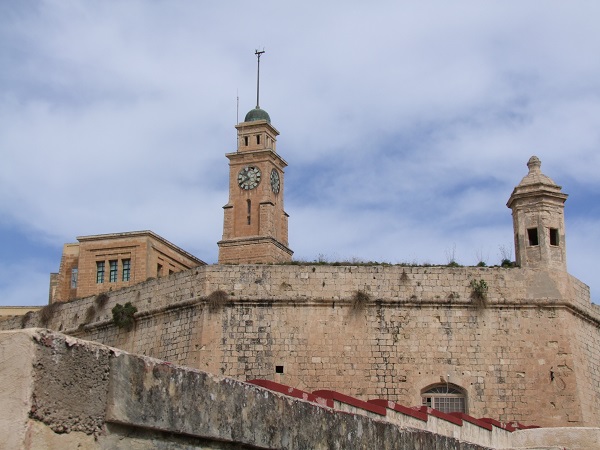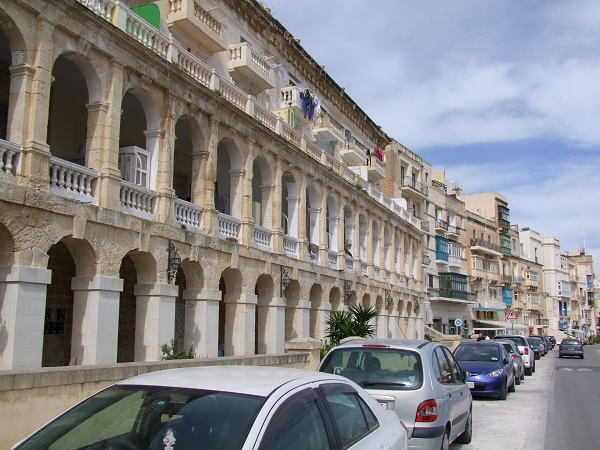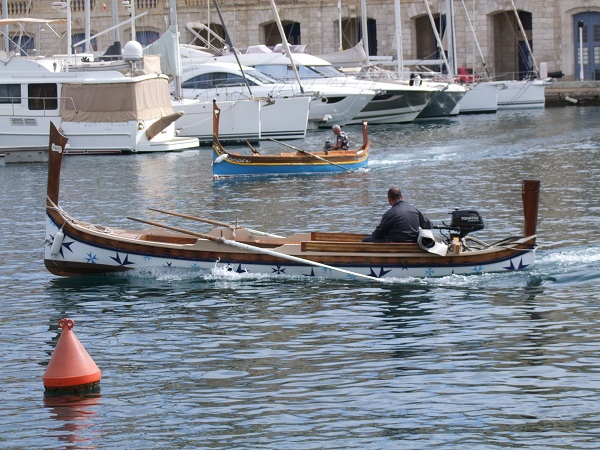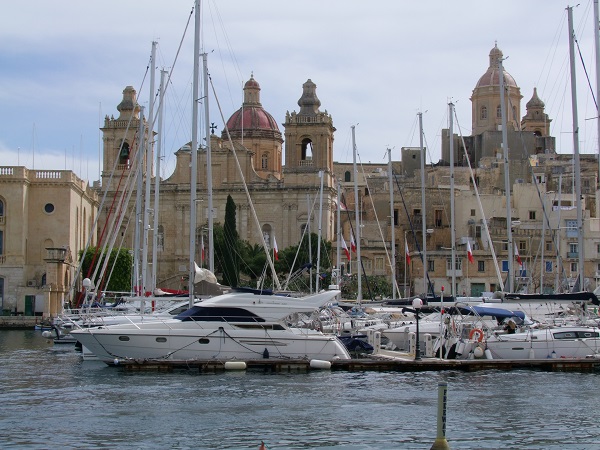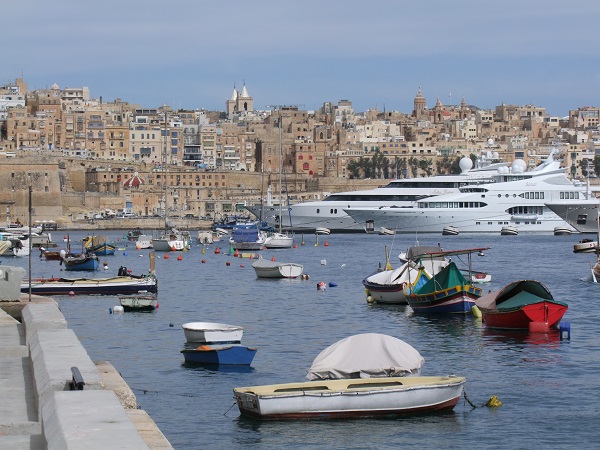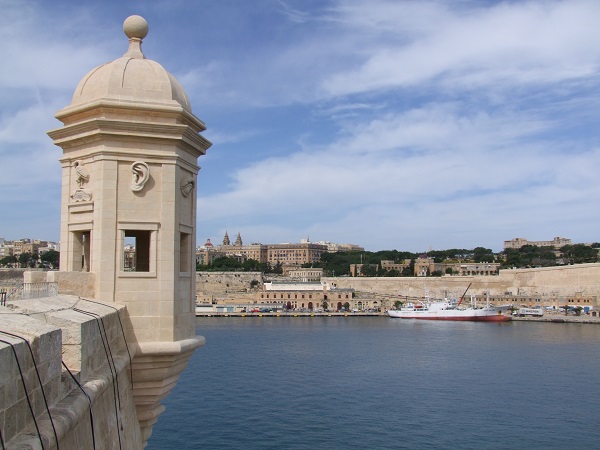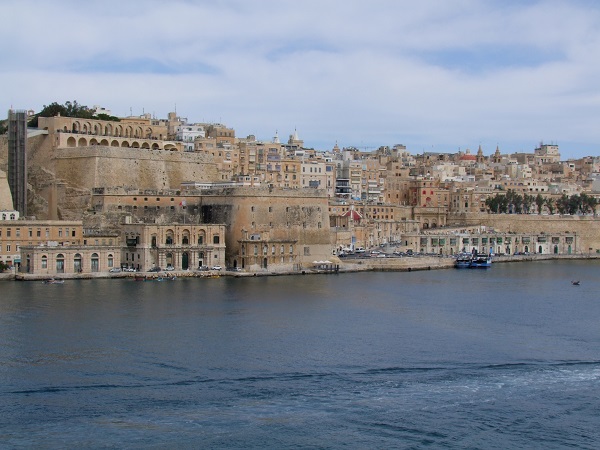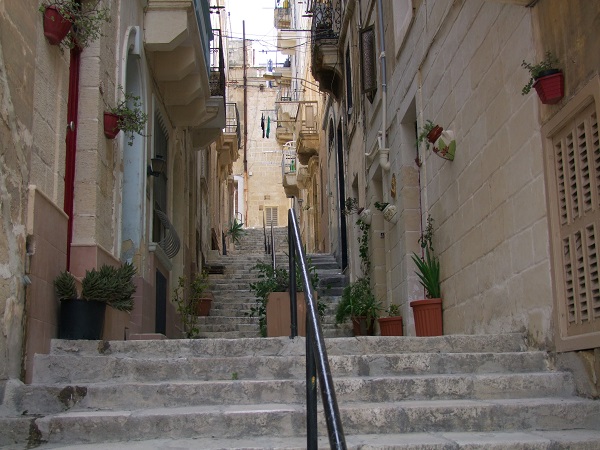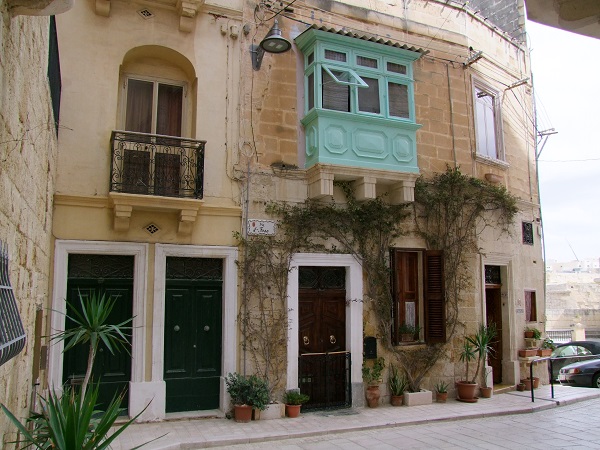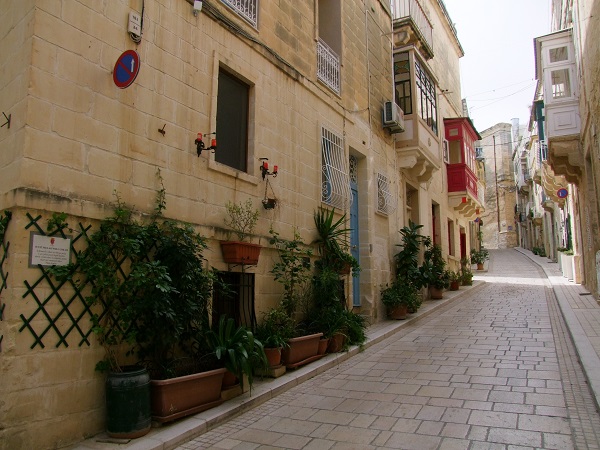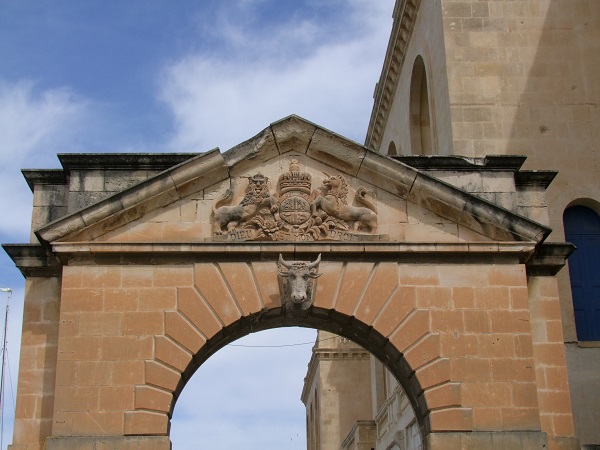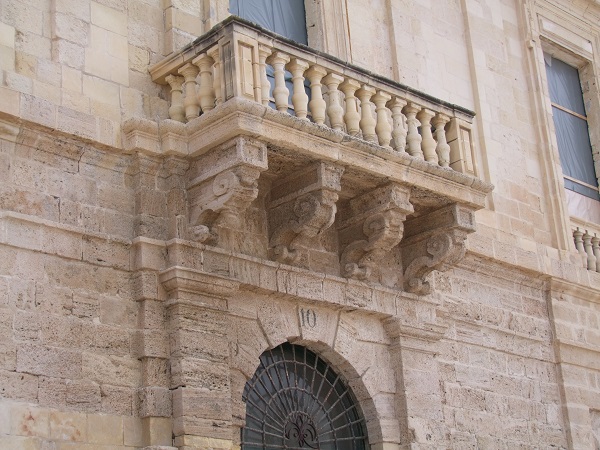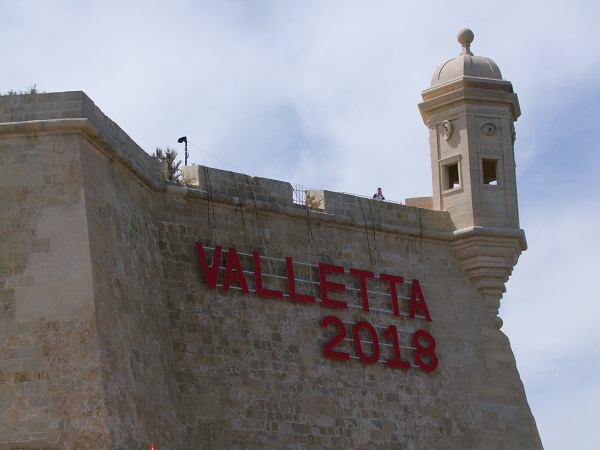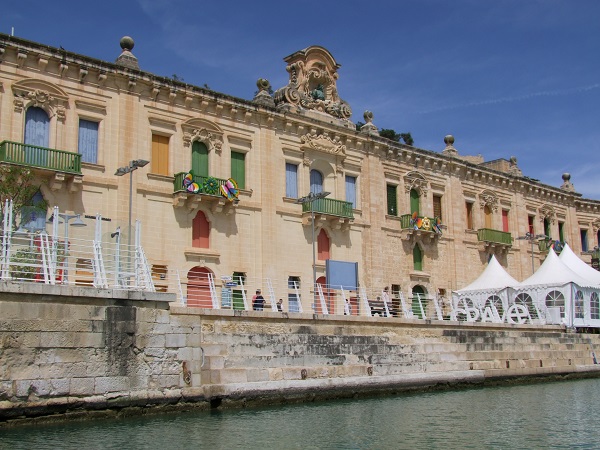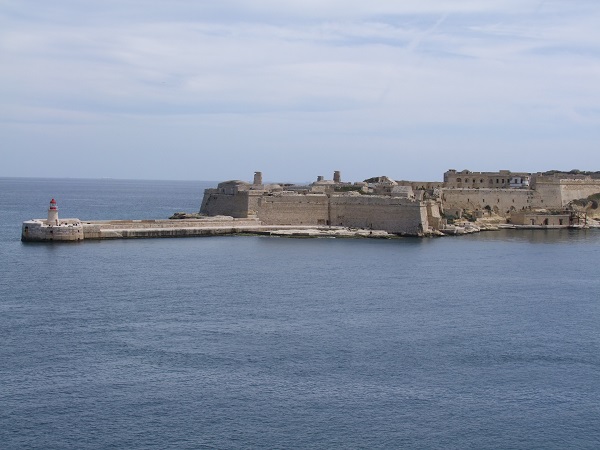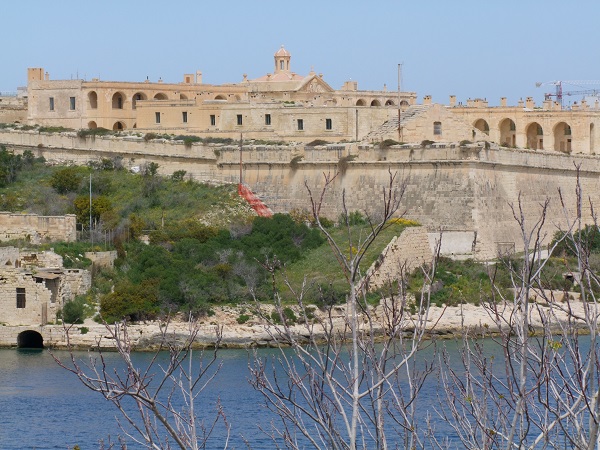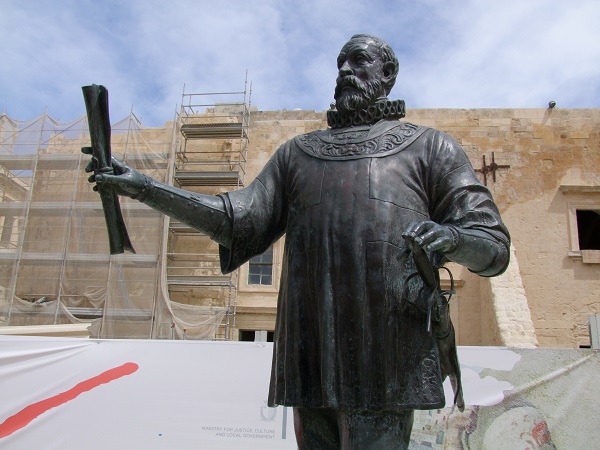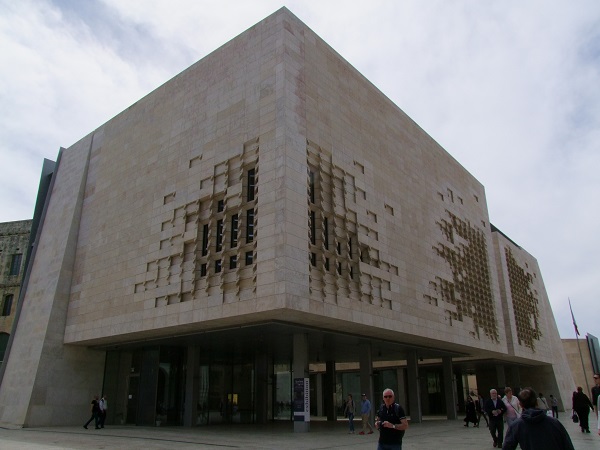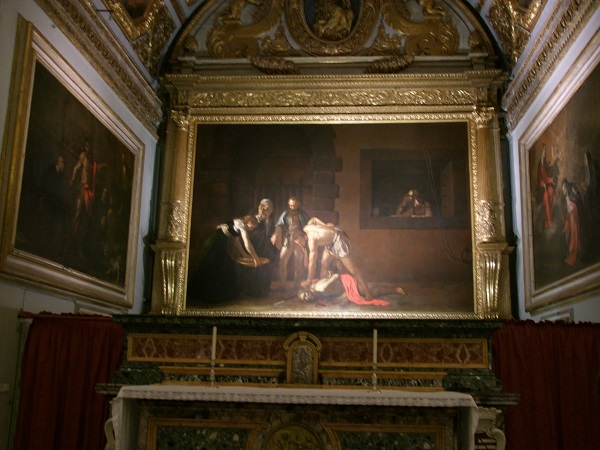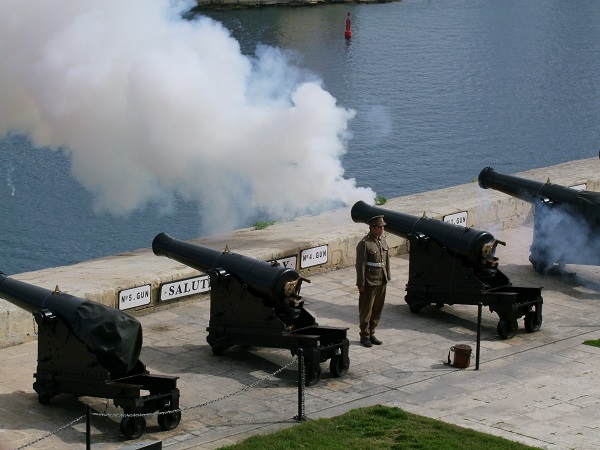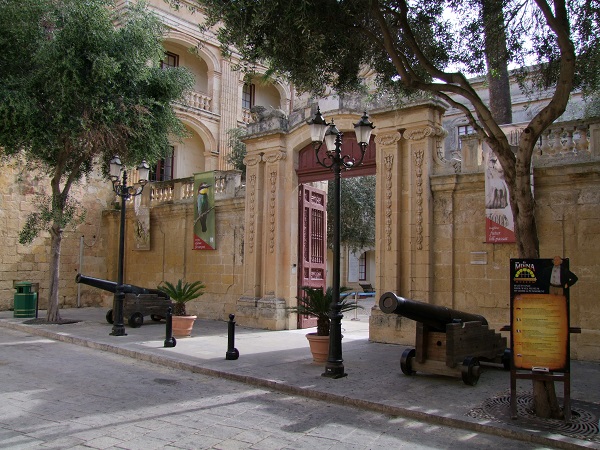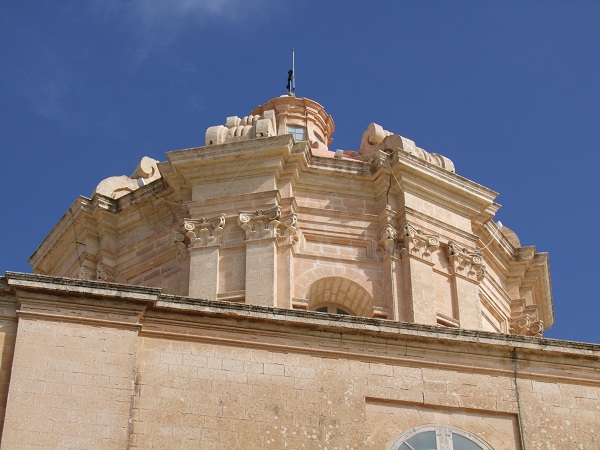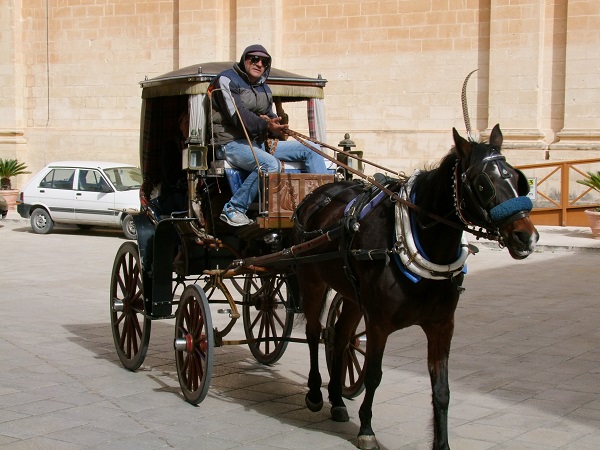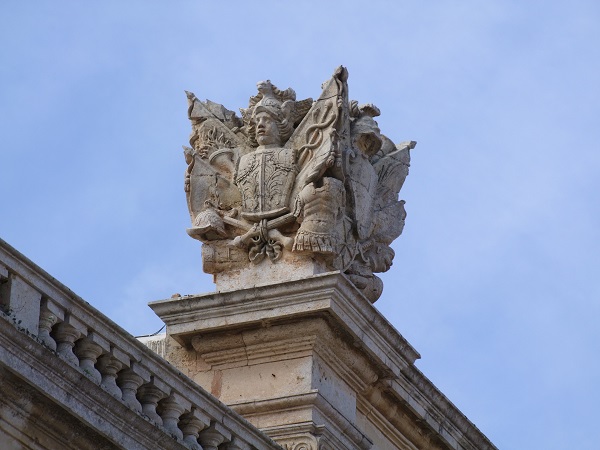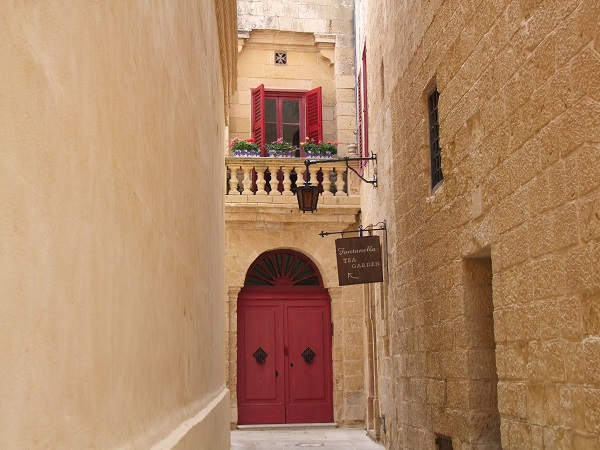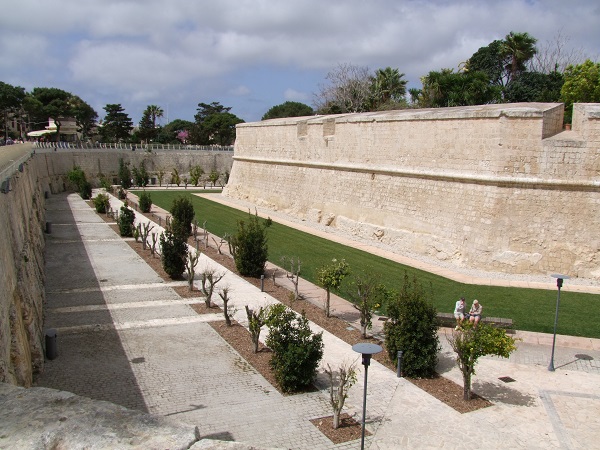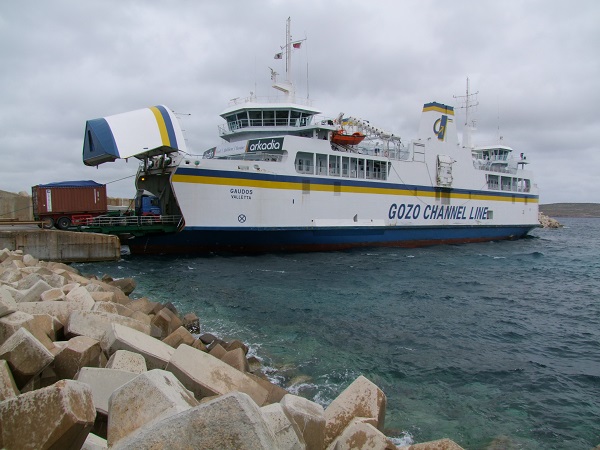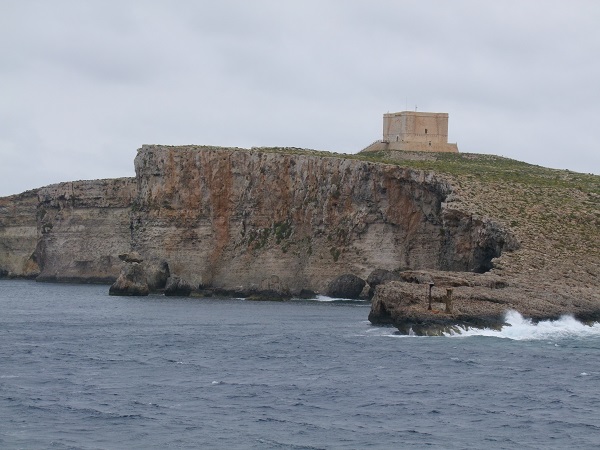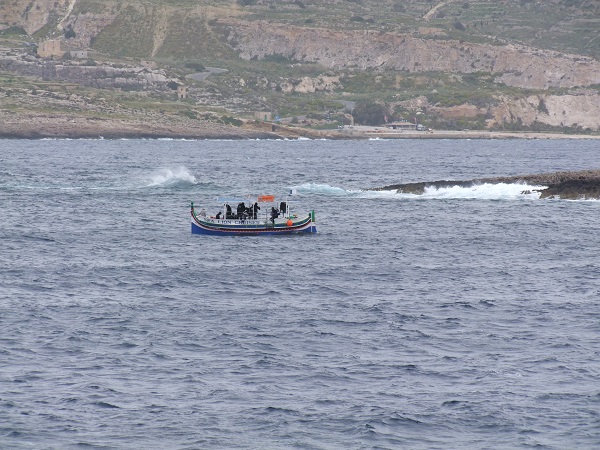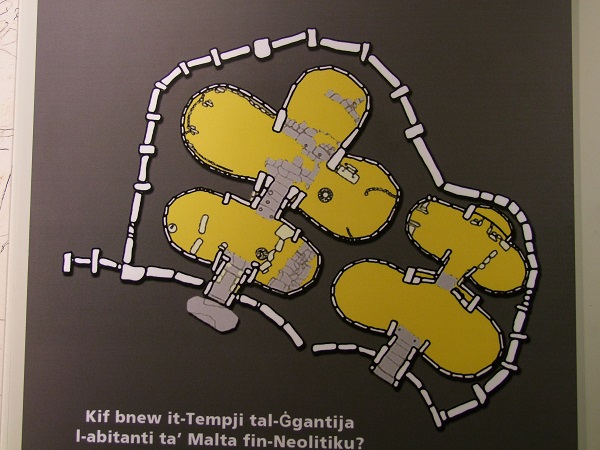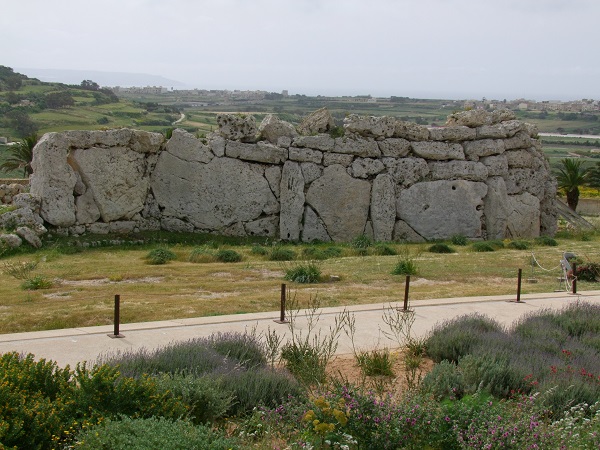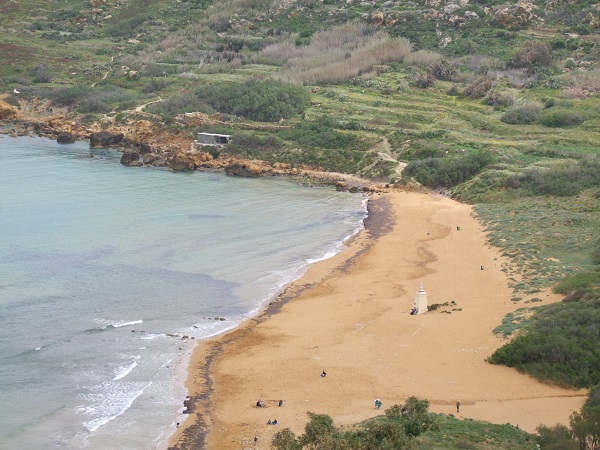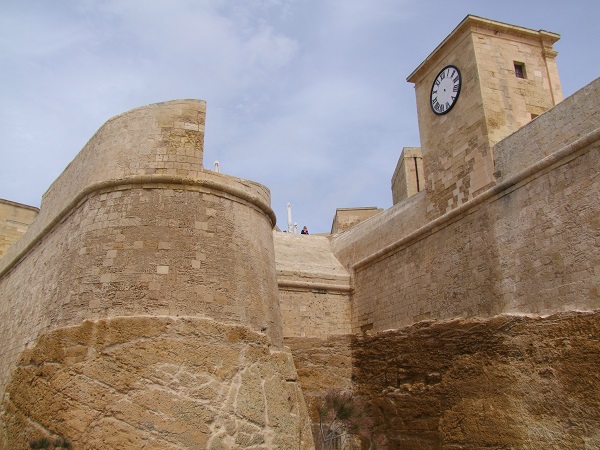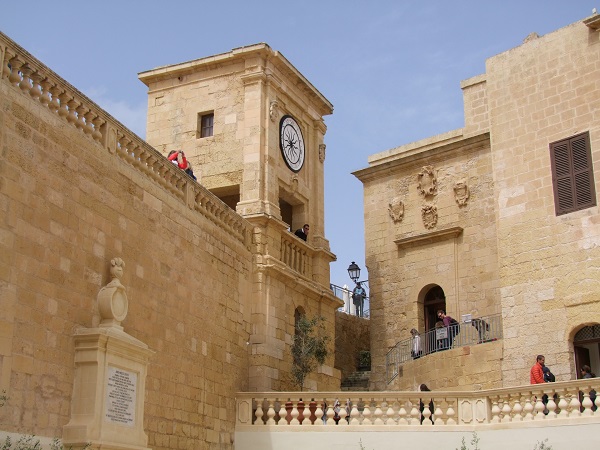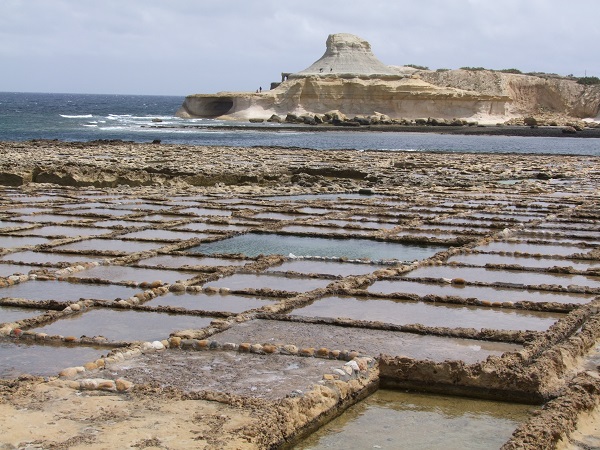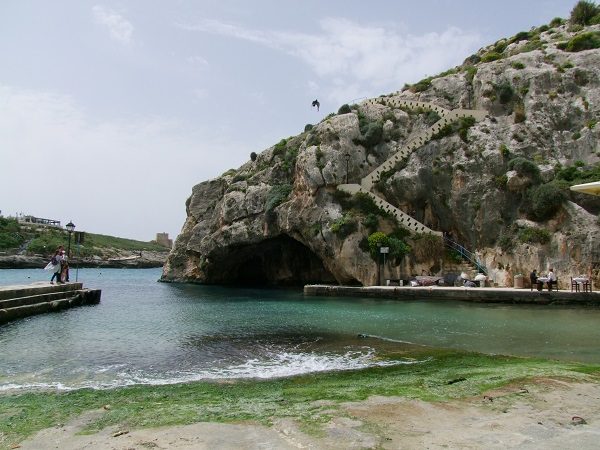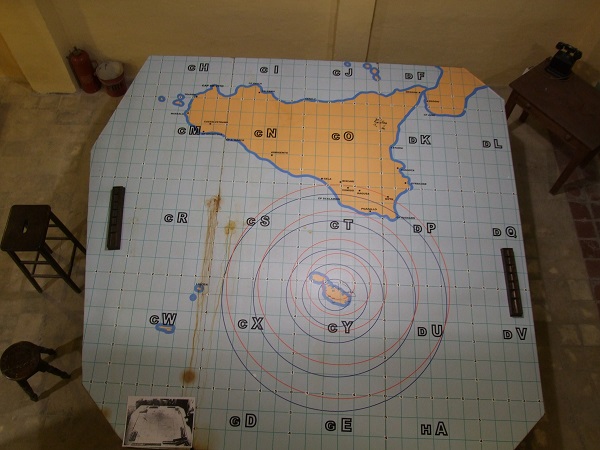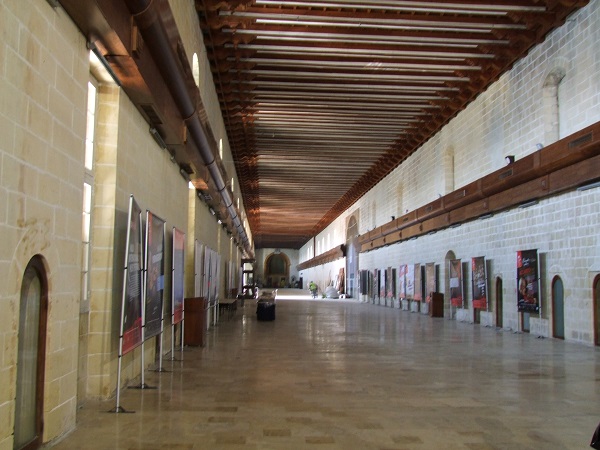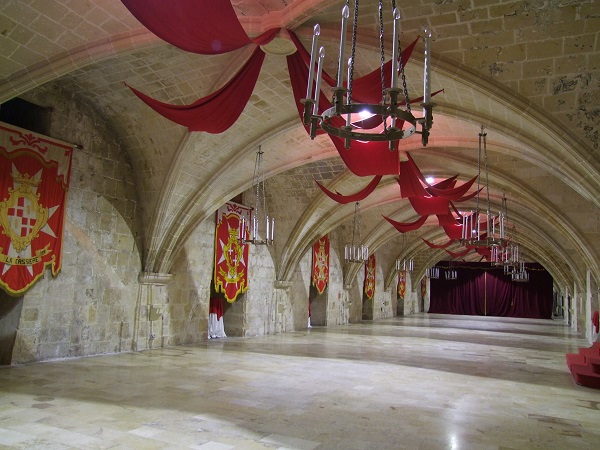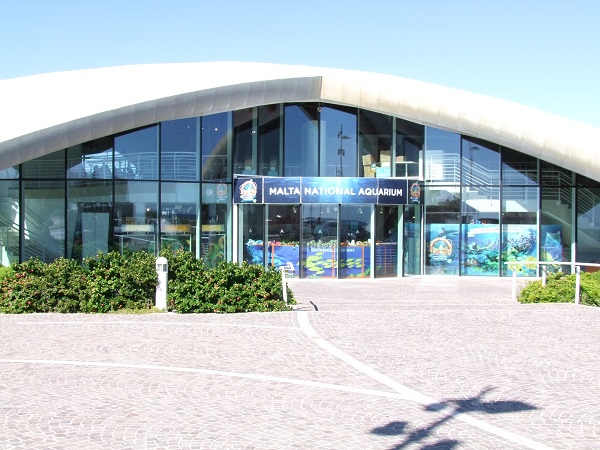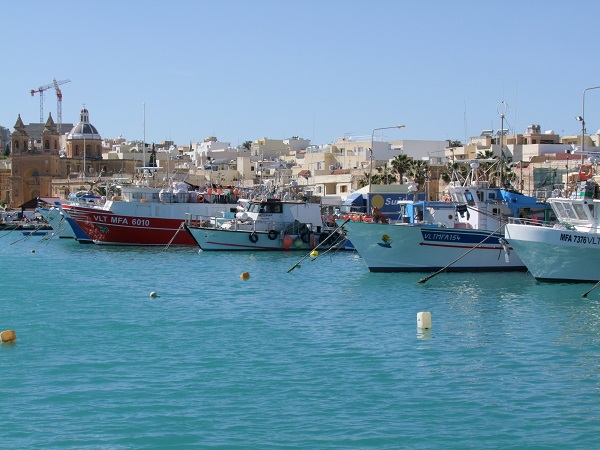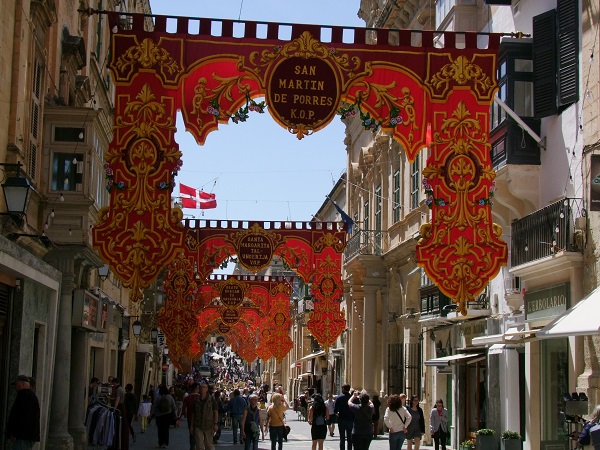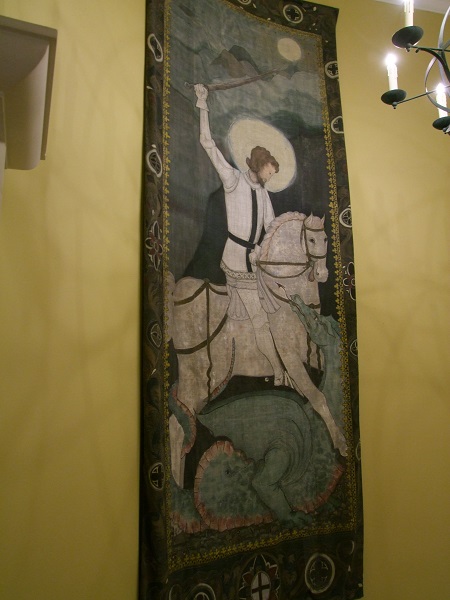
While first impressions can be lasting, ours seemed to make comparisons with other places we have had the luck to travel and experience: in some ways Malta is similar to San Marino in both its walled fortifications on high rock although inland, and being a similar “small state”, and Dubrovnik which still has its maritime fortifications. And Malta is arguably even more tidy, neat and pristine than both.
Malta’s airport is similar in size/capacity to Luxembourg’s which meant a quick exit into bright sunshine and blue skies, plus a steady 18-21C heat which would remain constant for the week. In the car on the way to the hotel, driving on the left, the roadside cacti were noticeable as was the architecture of light brown (limestone) stone buildings with flat rooves, and the wind, a sea breeze - welcome from the land-locked Grand Duchy.
We stayed St Georges Bay, considered as the modern area just north of Valletta and Sliema on the north-east coast.
After taking our bearings upon arrival the first day was spent strolling the streets and waterfronts, visiting Valletta and what is known as the Three Cities, which comprise:
• Senglea / Lisla on a peninsula
• Cospicua / Bormla, a strip of land joining the two peninsulas.
Despite Mdina in the centre of the island being the capital, the Knights initially used the Three Cities as their base as they had access to the sea and ships; they used Malta as a base from which to attack the Ottomans in the 16th century. Walled fortifications surrounded the Three Cities, with two lines of fortified walls and gates.
Malta’s population is now 430,000 spread over the three islands; it is densely populated with suburbia seeming to extend much further than it should: tourism is the main sector of the economy, with cottage industries, financial services, film production, IT specifically regarding online gambling also important; the agricultural sector represents only 3% of the economy (all Mediterranean crops are grown but mainly potatoes, onions and tomatoes), even grapes for wine, with the Maltese importing 80% of its needs.
The Three Cities
One cannot but notice that the harbour has a number of super yachts berthed in the marinas, along with other craft - both yachts and cruisers - of all sizes. Nearby too are a Baroque church, and the Malta at War museum.
By this introduction to Malta we were beginning to learn about the island’s history and the place the Knights, with their Grand Masters, hold in the island’s heritage. For those interested in history, Malta is a fascinating place; for those not so interested, there are SO many other things to see and do.
The harbour ferry - like a Maltese version of a Venetian gondola at a fraction of the cost (Harbour cruise 30 mins €8/person; Valetta €2 one-way) - dropped us at the Valetta waterfront, where former warehouses have been converted into trendy restaurants and shops. It is also where the mammoth cruise ships berth for passengers to disembark. A lift has also been installed to bring passengers disembarking to the top and entrance to Valletta.
Despite its austere facade, the interior of the 16th century religious building is incredibly ornate with its polished floors, gilded and decorated walls and painted ceilings. Each langue/nationality of knights had their own chapel in the Church - almost 400 knights of the order of St John are buried in the crypt. In the Oratorium, there are two original paintings by Caravaggio (originally from Milan, he studied in Rome from where he fled after killing someone and was protected by the Grand Master and given the title of Knight) - the Beheading of St John the Baptist (his only painting he signed) and the Meditation of St Jerome. Caravaggio escaped from Malta after injuring a fellow knight, and was expelled from the order in absentia.
The War Rooms
People working here signed the official secrets act and worked on a need-to-know basis, both military and civilians working 27 days out of every 28.
Malta also had 11 submarines based south of Valletta. Churchill knew that if Malta fell, the Nazis would have a clear route across the Mediterranean. Supplies to Malta were therefore crucial; in one period, just 5 of 14 merchant ships of supplies got through to Malta, giving it 10 weeks of supplies, with German U-boats accounting for most of the rest. Rommel then fell due to logistics and a lack of fuel and provisions.After this, Malta then focussed on the Invasion of Sicily, with the guide referencing Operation Husky and Operation Mincemeat.
This multimedia experience runs for 45 minutes (in a theatre with audio headsets in a multitude of languages) which covers the entire 7,000 years history of the island nation, including its early inhabitants and the neolithic remains, plus invasions from the east, from North Africa, from the Romans, from the Ottomans, from the Normans and up to WWII, with the Great Siege of 1565.
Included with the €16 entry ticket was a short tour of the Knights Hall, the former hospital, beside which is the Mediterranean Conference Centre, a magnificent facility built in what used to be the gardens of the hospital.
A level below the Knights Hall is another ward, where the poor would be treated and where 3 patients would share a (large) bed. Underneath that again are a series of levels of rooms and chambers, with the lowest at sea level where some boats could go - if they could navigate the secret entrance from the harbour.
Located in the centre if the island, Mdina used to be the capital, up to 1571 when Valletta became the new capital, with Mdina becoming known as the “silent city”. Nowadays Mdina itself has a population of only 300 people but it is home to the Archbishop and St Paul’s cathedral. Some buildings belonging to noble families are still standing within the walled city.
The town is full of 2- and 3-storey stone buildings with almost every square metre paved. It is in pristine condition and kept spotless and is blessed it is not affected by the ravages of pollution such as experienced in larger towns and cities.
From Mdina to Valletta there are stretches remarkably preserved of the 17th century Wignacourt viaduct (named after the Grand Master) to bring water to Valletta, part of which goes underground. The island has no rivers; instead it gets its drinking water from a significant underground water table aided by the porous limestone rock.
Dingli
Fish on Friday
Malta’s National Aquarium may not be the largest, but what it lacks in size it more than makes up in effort and presentation; the water clarity is crystal-clear throughout. The multi-level complex on the tip of the Qawra peninsula only takes 20 minutes to get to by car; the Hop-on Hop-off bus also stops here as well as at many other stops across the island.
Each day the staff organise around a dozen short talks, etc. - the ones we attended included shark conservation initiatives and feeding time.
Then a short drive down to Marsaxlokk on the south-east cost; described as a fishing village, it still has an operational small fishing fleet, plus boatyards to the south. Its harbour / marina has the added protection of a sandy breakwater that has created a sandy beach for sunbathers and paddlers. Along the promenade are both market stalls as well as waterfront restaurants and cafés from where one can relax and have a nice meal or drink overlooking the azure water and multicoloured traditional small boats interspersed with more modern pleasure craft.
We also had a day-trip to Gozo, the second largest of the three islands that make up Malta, taking the 20-minute ferry from Cirkewwa to Imgarr (just €6.50 return as a foot passenger) and passing Comino (the smallest of the 3 islands) around which were dotted boats with scuba drivers. There are three ferries that operate this route, each with a capacity of around 900 passengers as well as over 50 vehicles. Once off the ferry, the choices of transport include a hop-on hop-off bus, an island bus service and taxi.
Comino has just 3 permanent inhabitants, but also a 4-star hotel open just 9 months of the year.
Ggantiga Temples
They are just one of the dozens of such sites around the islands, with the visitor centre here having extensive audio-visual presentations and exhibitions of discovered artefacts.
Gozo has a more rural feel to it, as if life is lived at a slightly slower pace. The towns are similar, and equally spotlessly tidy.
Its Citadel, like that of Mdiba/Rabat, is a walled city: its contains functioning law courts and a prison which is now a museum. The Citadel was restored recently and has a lift and a visitor’s information centre, as well a museum and an imposing cathedral with the bishop’s residence.
These date back 350 years and stretch 3km along the eastern coastline, some of which are still operational by the same families, having been passed down through generations. They harvest sea salt in the hot months of the summer when the water evaporates. It is used in cooking and used locally.
With Malta used frequently as a film set, and films such as Gladiator, Troy, Murder on the Orient Express (2017), Captain Phillips, The Da Vinci Code, Midnight Express, etc. - one production company even has giant water tanks for filming sea scenes - some film sets have been preserved as tourist attractions open to the public. These include sets used for The Count of Monte Cristo (2002) and Popeye (1980), the latter which has an entire village of 19 wooden buildings near Mellieha in the north-west of the island, with added attractions including a 15-minute documentary film and a boat trip around the bay.
And during the summer there is a village festival on somewhere on the island every week-end, with marching bands, fireworks and celebrations centred around the local Church which is usually decorated and illuminated.
In Malta the island’s national dish is rabbit; there is also a lot of fresh fish on the menu, but not all of it is local (e.g. salmon).
As rabbit is the national dish in Malta, this was one of our main course choices along with a beef and mushroom risotto, which followed starters of a seafood chowder and a burrata and tomato salad.
The wine list is mainly French and international wines, but we dared to try a local Chardonnay, named “Isis” - we were told it was named after the Egyptian God, not more recent nor nefarious incarnations. It was actually really good...
The Boathouse in Xlendi on the south coast of Gozo, is situated in a tiny bay with a magical cave feature on one side, with holiday apartments on the other. With a couple of other shoreline restaurants side-by-side, they offer an amazing menu containing primarily seafood with some meat and vegetarian dishes, both grilled and pasta dishes. And, despite its seating under canopies, they were air conditioned, all staff were smart uniforms and had obviously had formal training.
The Boathouse is a real gem, hidden in the open and definitely one to visit and try. Opening hours: 12:00 - 22:30 daily.
Accommodation
Arguably one of the best benefits of the Corinthian - apart from the 5 swimming pools and multiple restaurants offering a variety of cuisine - was the excellent service offered by the concierge desk - from booking hire cars to suggesting things to do locally. See https://www.corinthia.com/en/hotels/malta-stgeorgesbay
Getting There
See www.luxair.lu and www.luxairtours.com

